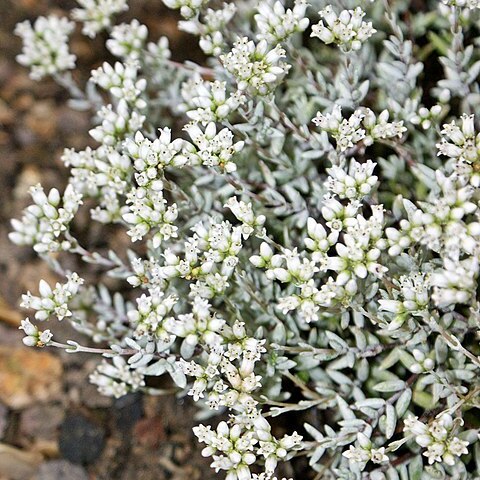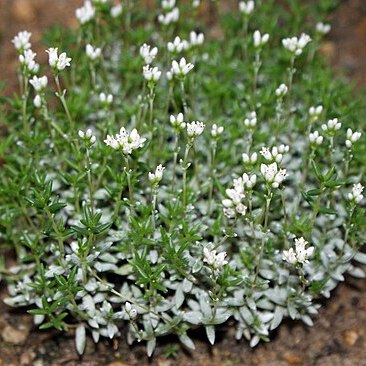Perennial dwarf shrub, succulent, much branched, erect to decumbent, carnose to woody stems up to 50 mm in diam., ± 0.15-0.3 m high, papillae on internodes, rarely peeling or flaking bark on older branches, old leaves deciduous. Leaves sessile, lanceolate, 8-15 x 1-2 mm, subulate, dorsiventrally flattened to terete, dark green, thick bloom. Inflorescence a flat-topped dichasium, few to many pedicellate, densely clustered flowers; peduncle 50-150 mm long. Calyx pointed, fleshy, green. Corolla tubular, scarcely fused, white or cream-coloured; lobes oblong-elliptic, 4-5 mm long, acute, dorsal ridge, recurved. Flowering time Feb.-Apr.
Perennial to 30 cm with erect to spreading, papillate branches. Leaves opposite, lanceolate, sometimes rounded in section. Flowers in dense, flat-topped clusters, tubular, whitish, petals ± 2 mm long.


